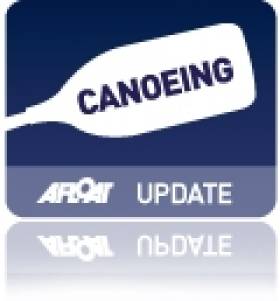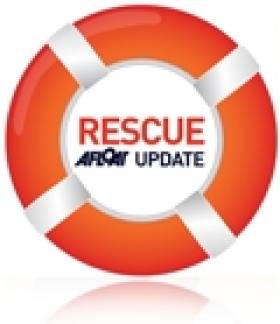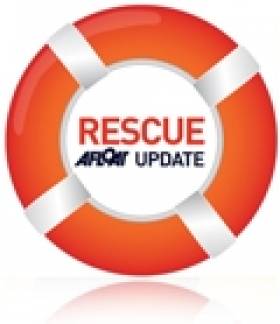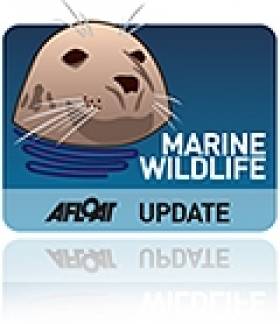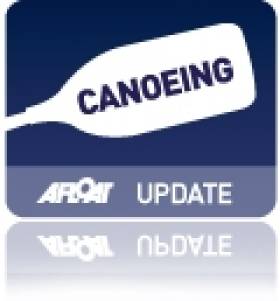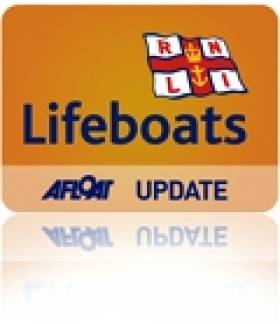Displaying items by tag: Kayaking
New Kayak & Canoe Trail Planned For West Cork
#Kayaking - West Cork is getting a new kayaking and canoeing trail to encourage adventure tourism in the region, as the Irish Examiner reports.
The new paddling trail will run between Skibbereen and Baltimore along the River Ilen and will have the full funding support of Cork County Council for works that include the upgrade of Deelish Pier in Skibbereen.
“Market research shows that people are really interested in activity-based holidays. This will be a great boost to Skibbereen and Roaringwater Bay,” said Cllr Christopher O’Sullivan at a meeting of the West Cork Municipal District in Clonakilty last month.
The Irish Examiner has more on the story HERE.
Kayakers Spend Night Stranded On Island
#Rescue - It was an unexpected night outdoors for two kayakers who were stranded on an island in the Black Valley near Killarney after losing their paddles.
As the Irish Examiner reports, Valentia Coastguard were unable to mount a rescue by helicopter due to dangerous weather on Sunday night (2 November).
But the man and woman were provided with a tens and supplied by Killarney Lake Rescue and finally retrieved by the Shannon-based search and rescue helicopter yesterday morning.
West Cork Kayakers Rescue Lough Hyne Swimmer
#Rescue - The Southern Star reports on the rescue of a swimmer in Lough Hyne by two passing kayakers last Sunday (27 July).
West Cork Kayaking Club members Declan McCarthy and David Sprott were within earshot of the man's call for help as he got into difficulty off Castle Island and rushed to his aid.
Another swimmer nearby joined the kayakers in guiding the man to the safety of the shore.
The Southern Star has more on the story HERE.
Marine Creatures Light Up West Cork Saltwater Lough
#MarineWildlife - "There is no light and I've forgotten my headtorch. The walls close in and within a few seconds we are in total darkness. Something sparkles when I paddle. I put my hand in the water and spin it around. Suddenly an entire galaxy of stars explodes from my fingertips, sending fading constellations of pale blue lights swirling out into the black."
If that got your attention, The Guardian has more on Kevin Rushby's 'glow in the dark' kayaking experience in West Cork with Atlantic Sea Kayaking's Jim Kennedy, made possible by the unique bioluminescent marine wildlife of Lough Hyne.
Laois Teen Makes Freestyle Kayaking Team For Euros
#Kayaking - Laois teenager Calvin O'Brien is one of the latest to qualify for the junior men's freestyle kayaking team headed to the European Championships in Slovakia this September.
As the Leinster Express reports, the 17-year-old claimed his spot by showing off his moves in the tough proving ground of a whitewater kayaking tournament in Tuam, Co Galway recently.
And he continues a long line of success for the Laois Kayak & Canoe Club, which has members competing at national level in canoe marathons and canoe polo.
The Leinster Express has more on the story HERE.
Canoeing Clubs In Battle For Club Championships This April
#Canoeing - Experienced canoeing and kayaking enthusiasts from across Dublin city and county are bound for Kilkenny and the south east as the countdown has begun to the country’s first ever Canoeing Ireland Club Championships.
Over 400 competitors from 19 clubs across the country, among them athletes from the Wildwater Aqua Canoe Club in Lucan/Chapelizod, Lir Canoe Club, Rockhoppers and the UCD Canoe Club, have already registered for the two-day white-knuckle, adrenaline-pumping contest that will draw Ireland’s top watersports enthusiasts to Kilkenny city, to nearby Graiguenamanagh and Tramore in Waterford on 12-13 April.
A series of training weekends began on Saturday 1 February and as many as 80 competitors will be in the region every weekend up to the Club Championships, preparing for the all-island event.
The Canoeing Ireland Club Championships 2014 is also set to be a major revenue spinner for both Kilkenny and Waterford, and an amazing showcase event with hundreds more supporters, family members and friends expected to flock to the region for the inter-clubs competition.
The ultimate club will be crowned based on its athlete’s cumulated performances across all of the eight disciplines, which include a canoe slalom and wildwater racing in Clashganny; sprint kayaking and freestyle kayaking in Kilkenny city; and kayak surfing in Tramore.
The venue for the ultimate challenge, the White Water Kayak Race, will be confirmed closer to the event as weather will play a major role in finding the most testing waters for the spectacular event.
This will be an epic weekend not to be missed, according to Canoeing Ireland development officer Benny Cullen.
“Kilkenny was chosen due to its central location, its large variety of rivers in close vicinity to the city and its welcoming atmosphere,” he said.
“Organisations such as Kilkenny Recreation and Sports Partnership and Kilkenny Leader Partnership have done trojan work in the region to promote the sport, improve facilities and get more people active and out on the rivers.
“We are very grateful to all our supporters, particularly Great Outdoors, for their generous sponsorship.”
Cullen added that the championship “will also be a great spectator weekend and the best views of the events in Kilkenny city will be from the east bank of the Nore in Kilkenny, along Johns Quay between Green Street Bridge and Kilkenny Castle.
“Onlookers and supporters in Graignamanagh will have a bird’s eye view from the canal tow path at Clashganny Lock.”
City Kayaking Announces Limited '€5 For Youth Groups' Offer
#Kayaking - Dublin-based urban kayaking operator City Kayaking has announced it has secured funding to help subsidise kayaking excursions for youth groups in the capital.
The company is now running a limited '€5 Kayaking for Youth Groups' offer to get Dublin kids on the water on kayaks from just €5 per head.
According to the website, the sessions on the River Liffey will be instructor-led in double-seater kayaks providing the best in comfort, stability in safety, so no prior experience is necessary!
For details visit the City Kayaking website HERE - and act fast, as places for these special trips are strictly limited.
Holyhead Lifeboat Rescues Kayakers From Irish Sea
#RNLI - Holyhead's all-weather lifeboat and volunteer crew launched on service to six kayaks in difficulty off Middle Mouse in the Irish Sea north of Anglesey in Wales last Sunday (20 October).
One of the party reportedly capsized and was in the sea for some time, but with help was recovered.
- Sea King helicopter from RAF Valley kept the party in sight until the lifeboat arrived. Cemaes Bay coastguard were also on shore watching and relaying information to the coastguard at Holyhead.
All the kayakers were rescued by the all-weather lifeboat from Holyhead RNLI and brought to the safety of Holyhead Marina.
Kayak The Liffey By Night Starting This Month
#Kayaking - Dublin-based urban kayaking operator City Kayaking is planning to start night-time padding trips of the River Liffey this month - in plenty of time for Hallowe'en!
The company's Facebook page has images from a test run last week, showing off some of the spectacular lights that can be seen along the river from the Docklands to the city centre.
As reported this past August on Afloat.ie, City Kayaking was in the running to secure finding from the Arthur Guinness Projects initiative to expand its base and its offerings to locals and tourists alike to see the city like they've never experienced it before.
Isle of Man Lifeboat Launches To Stranded Kayakers
#RNLI - Douglas RNLI lifeboat on the Isle of Man was launched last night (4 September) at the request of Douglas Coastguard following the report of two kayakers stranded on the seaward side of Douglas Breakwater.
The RNLI all-weather lifeboat Sir William Hillary was launched under the command of volunteer deputy second coxswain Graeme Cushnie, to assist the coastguards by illuminating the scene from seaward, allowing coastguard rescue officers to negotiate their way down the sea defence wall and bring the kayakers to safety.
Both kayakers having been reported as safe and well the lifeboat was able to recover both kayaks from the Irish Sea to the visitors’ pontoon at the Battery Pier.



























